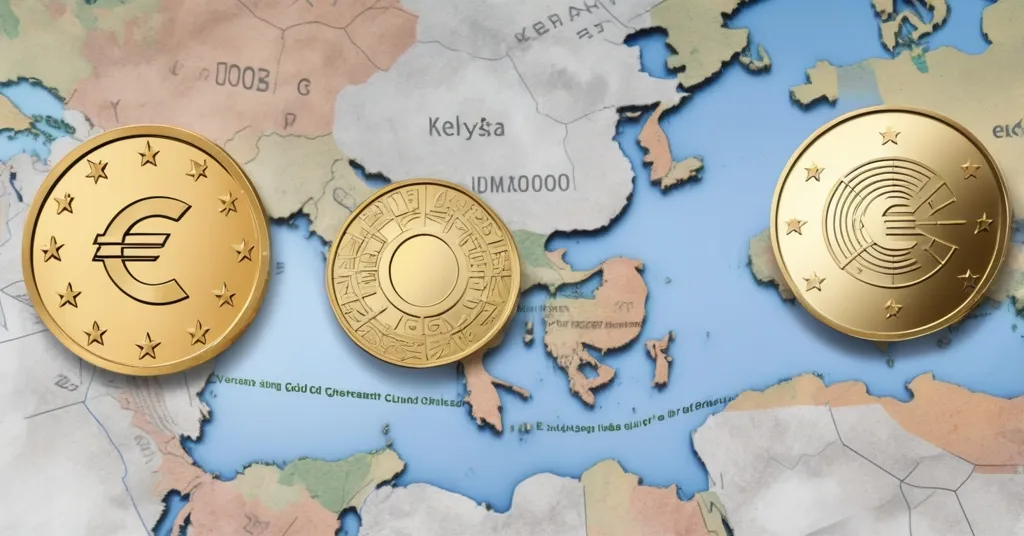Kyrgyzstan’s Gold-Backed USDKG Stablecoin Launching Q3 2024 Amid ECB’s Digital Euro Tests

Kyrgyzstan’s Gold-Backed USDKG Stablecoin Set for Q3 Launch Amid ECB’s Digital Euro Exploration
Kyrgyzstan is set to introduce its USDKG stablecoin in Q3 2024, aiming to lower remittance costs and enhance financial inclusion. Meanwhile, the ECB is delving into the potential of a digital euro, engaging 70 participants in its innovation hub. These moves reflect the varied approaches to digital currencies globally, even as enthusiasm for CBDCs cools.
- Kyrgyzstan launching USDKG stablecoin in Q3 2024
- Gold-backed with $500 million at launch, expanding to $2 billion
- ECB testing digital euro use cases with 70 participants
- Global interest in CBDCs waning since China’s digital yuan
Kyrgyzstan’s USDKG stablecoin is designed to slash the high 8% fees associated with remittances, a major issue in a country that received $3 billion in remittances in 2024, with $2.7 billion coming from Russia. By backing USDKG with gold, starting at $500 million and aiming for $2 billion, Kyrgyzstan aims to provide a stable and trustworthy currency. Overcollateralization, which means holding more gold than the value of the stablecoin, will help manage gold price volatility, while regular audits will ensure transparency.
The choice to prioritize USDKG over the digital som, Kyrgyzstan’s CBDC, highlights the country’s strategic shift towards leveraging stablecoins for economic benefits. This move is not without risks, as a significant drop in gold prices could destabilize USDKG, potentially leaving users with a devalued asset. However, the potential for lower remittance costs and increased financial inclusion remains a compelling incentive.
On the other side of the globe, the European Central Bank (ECB) is exploring the digital euro’s potential through its innovation hub. This initiative splits 70 participants into two groups: the ‘pioneers,’ focusing on conditional payments, and the ‘visionaries,’ examining broader societal impacts. ECB executive board member Piero Cipollone expressed enthusiasm about the project’s reception, noting the ‘huge amount of interest from market participants.’
Cipollone also highlighted the digital euro’s potential to drive financial innovation in Europe, stating:
The breadth and creativity of the proposals highlight the digital euro’s potential as a catalyst for financial innovation in Europe, including the development of new solutions that further enhance the payment experience for Europeans and create market opportunities.
Despite the enthusiasm, the ECB remains cautious. An ECB spokesperson emphasized that:
The legislation is still under discussion, and we won’t take a decision on issuing the digital euro before that process is complete.
This cautious approach reflects the complexities and potential pitfalls of implementing CBDCs on a large scale. The innovation hub’s findings are expected to be published in a report later in 2024, providing insights into the digital euro’s feasibility.
While these developments unfold, it’s worth noting that global interest in CBDCs has indeed cooled since the initial rush spurred by China’s digital yuan. Some countries, like the U.S., have outright rejected CBDCs, while others are exploring alternative financial innovations. This shift underscores the diverse paths nations are taking in the digital currency landscape.
In the broader context of cryptocurrencies, Bitcoin continues to stand as the leading decentralized currency, unaffected by national policies and gold price fluctuations. Bitcoin’s resilience and its role in championing decentralization and financial freedom offer a counterpoint to the centralized stablecoins and CBDCs being explored by Kyrgyzstan and the ECB.
These initiatives highlight the potential for innovation and disruption in the digital currency space, even as the hype around CBDCs wanes. The journey towards a digital financial future remains dynamic and diverse, with each country’s approach reflecting its unique economic challenges and goals.
Key Questions and Takeaways
- What is the purpose of Kyrgyzstan’s USDKG stablecoin?
The USDKG stablecoin aims to address financial inclusion and reduce the high costs associated with remittances in Kyrgyzstan.
- How will Kyrgyzstan ensure the stability of USDKG?
Kyrgyzstan will back USDKG with $500 million in gold at launch, expanding to $2 billion, and overcollateralize it to account for gold price fluctuations, with regular independent audits to maintain trust.
- What is the focus of the ECB’s digital euro innovation hub?
The ECB’s innovation hub focuses on testing use cases for the digital euro, with two groups: pioneers concentrating on conditional payments and visionaries exploring broader societal impacts.
- How has global interest in CBDCs evolved recently?
Global interest in CBDCs has cooled down since the initial rush spurred by China’s digital yuan, with some countries like the U.S. rejecting CBDCs and others focusing on other financial innovations.
- What are the next steps for the ECB’s digital euro project?
The ECB will publish a report with findings from the innovation hub later in 2024, and the digital euro’s launch depends on legislative approval.



